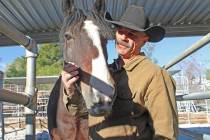Steps to take when living with seizures
A problem that affects people of all ages is seizures. If you have never seen someone have a seizure, the first time can be intimidating. You are left feeling hopeless and helpless.
There are multiple types of seizures that can affect people in different ways and have a multitude of effects in their lifestyles. Seizures can come at any time, often with little or no warning. Seizures affect 1 in 26 Americans, according to the Epilepsy Foundation. Being able to recognize the onset of a seizure and how to handle the situation before emergency personnel arrive can influence the outcome.
Seizures happen when part of the brain’s electrical system malfunctions. Instead of a smooth, controlled firing system of electrical impulses, cells fire in an unorganized rhythm. The result is unconsciousness and uncontrolled contractions of the body’s muscles. In cases where only a minimal part of the brain is affected, a less subtle seizure may be noted. You may notice the person change, with an inability to communicate, or have little control and undirected movements.
Typically seizures last for short periods, seconds to minutes. However, a period of confusion known as the postictal phase may last for hours.
Many times people who experience seizures may be able to recognize when a seizure is going to occur. An aura is a “feeling” that people get when they recognize a seizure’s onset. Many people describe their aura as a forewarning to their condition and are able to take medications to prevent it, or place themselves in a comfortable situation to ride it out. Auras can be different for everyone. Many people say they have a certain flavor in their mouth, see lights, develop a headache or get tingling sensations in their head or body.
The most typical seizure that emergency responders see is the generalized tonic-clonic seizure, formerly known as “grand mal seizures.” This is a full-body seizure. These people will lose consciousness and experience full-body stiffness and uncontrolled movements.
Breathing patterns can slow, cease or become irregular. You may notice a blue hue starting around the person’s mouth or lips, which is normal. These seizures typically last a couple of minutes, and regular breathing patterns should resume shortly. You may notice foaming at the mouth and/or the person losing control of their bladder and/or bowels.
If you are present when you see this type of seizure it is important to follow some simple instructions. Don’t place anything in the person’s mouth. You take a large risk of blocking the person’s airway and/or getting something lodged in the trachea. Instead, try to roll the person on his or her side in case the person starts to vomit. He will be able to spit it out.
Try to loosen any tight clothing. However, you want to refrain from holding the person down or preventing him from shaking. Do not pour any liquids into his or her mouth. This could block the person’s airway.
Stay with her until the seizure has stopped, and immediately call 911. If the person does not resume breathing, initiate CPR.
Another typical seizure (and heartbreaking for a parent) is a febrile seizure, caused by a rapid spike in a child’s fever. This is most common for children under 7 years old. The body’s thermoregulatory mechanisms recognize a rapid increase in temperature and use a seizure as a “reset button.” This will look similar to a tonic-clonic seizure in that the child will be unconscious and have uncontrolled stiffness and shaking movements. This can be intimidating for parents. Your child’s breathing may cease and/or become irregular. Avoid putting anything in the child’s mouth. After the seizure, if the child does not resume regular breathing, call 911 and initiate CPR. Hospital care for these children will focus on decreasing the child’s fever and addressing any underlying infection that caused the fever to rise.
A seizure that is not common is absence seizures. This is characterized by a brief impairment of consciousness, typically lasting seconds. You can recognize this by noticing the person with random vacant stares. Communication with these people is temporarily ceased and resumes normally after the seizure. In some cases, a rapid twitching of the eye lids or facial muscles accompanies the absence seizures. They can occur sporadically or up to 100 times a day.
Seizures can become a burden on many people’s lives, preventing them from driving cars and/or participating in leisure activities such as swimming. But with proper physician care and heeding the warnings as laid out to them, seizures do not need to run or control your life. Any person living with seizures or who experiences seizures on a regular basis should see a doctor.
The doctor can prescribe medications to help decrease the frequency and monitor seizure habits. If you have any questions or comments, contact me at the firehouse at 293-9228, or go online and visit www.epilepsy
foundation.org.
Brian Shea is a Boulder City paramedic/firefighter. If you have further questions about this or any fire safety issue, contact the Boulder City Fire Department at 293-9228.











